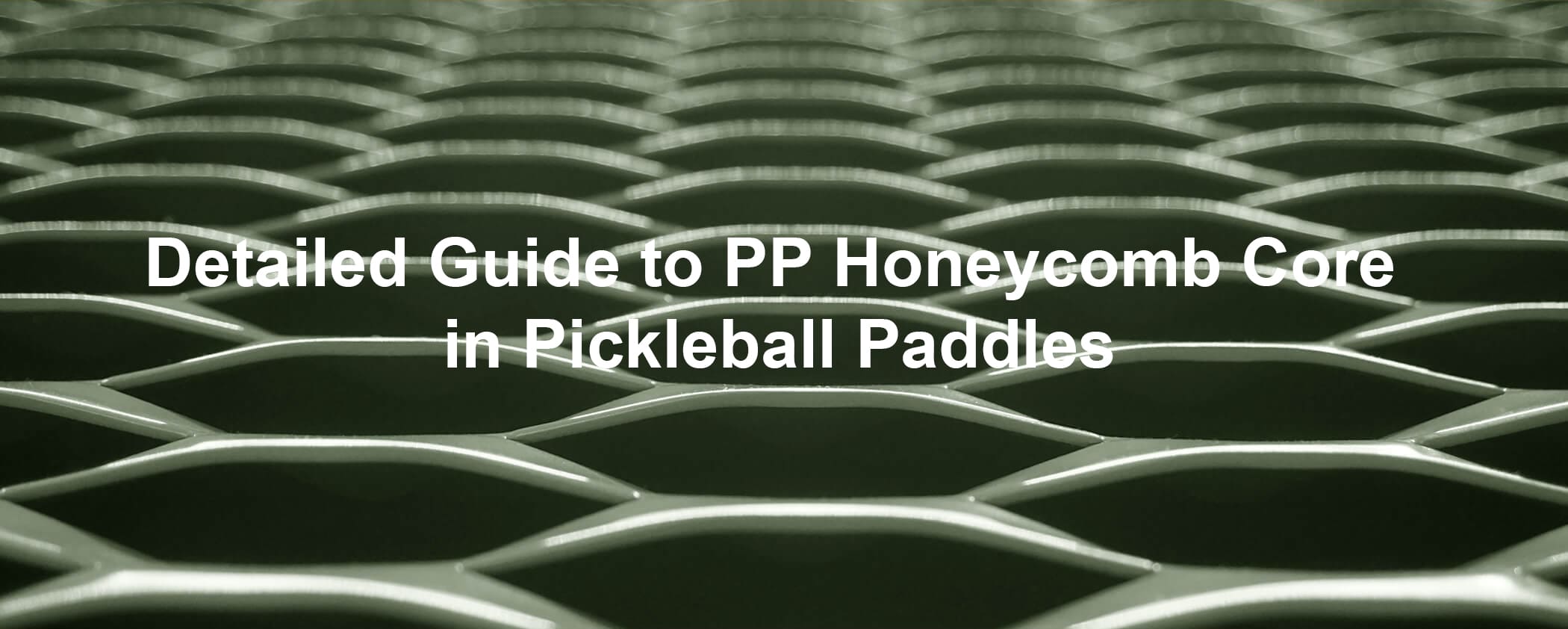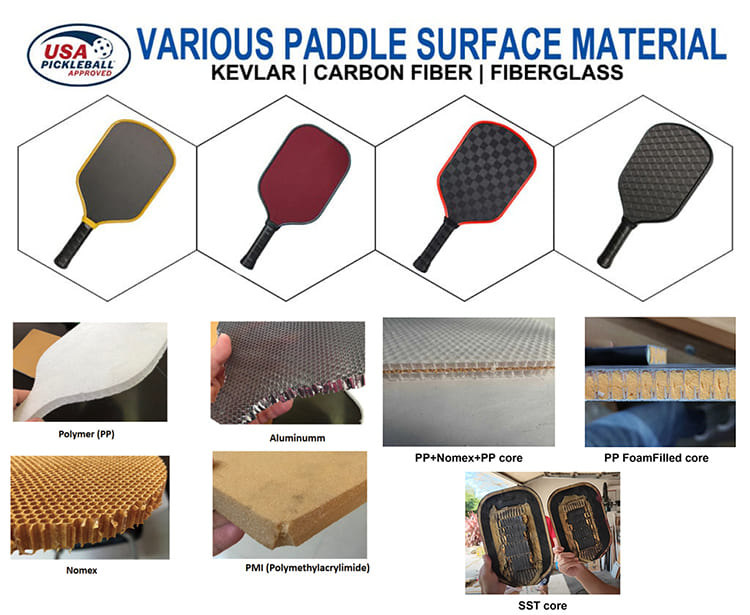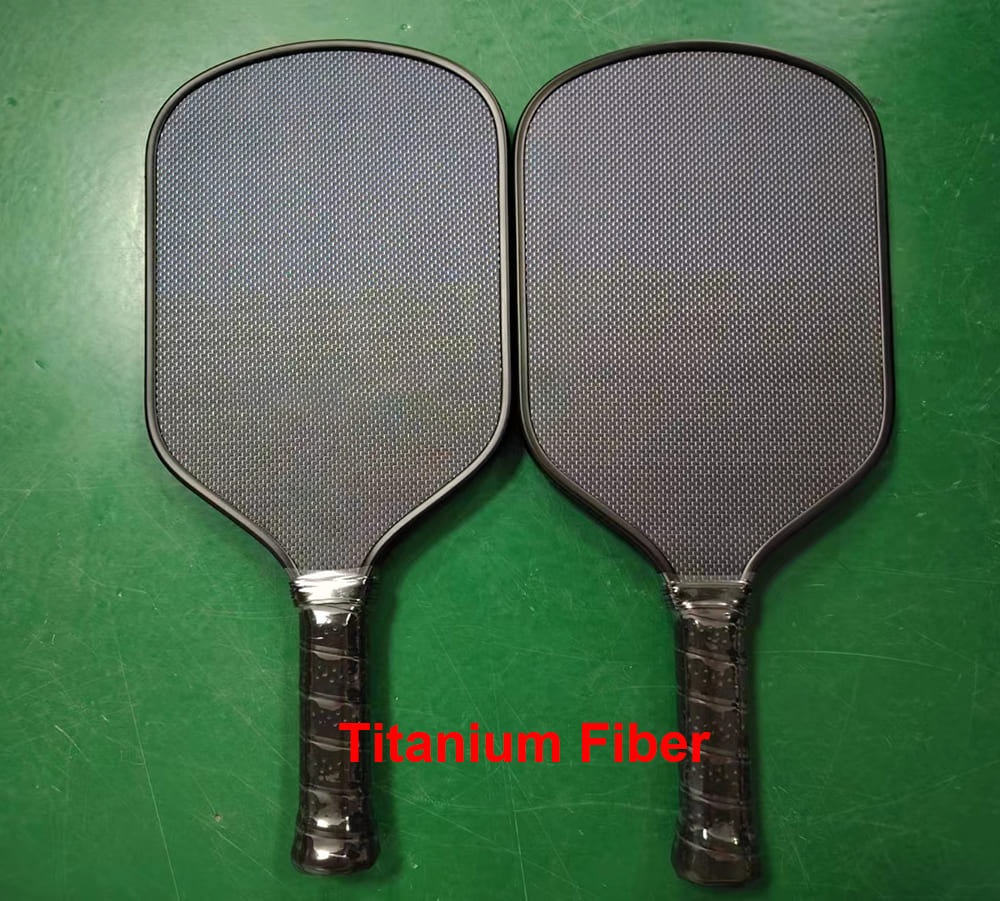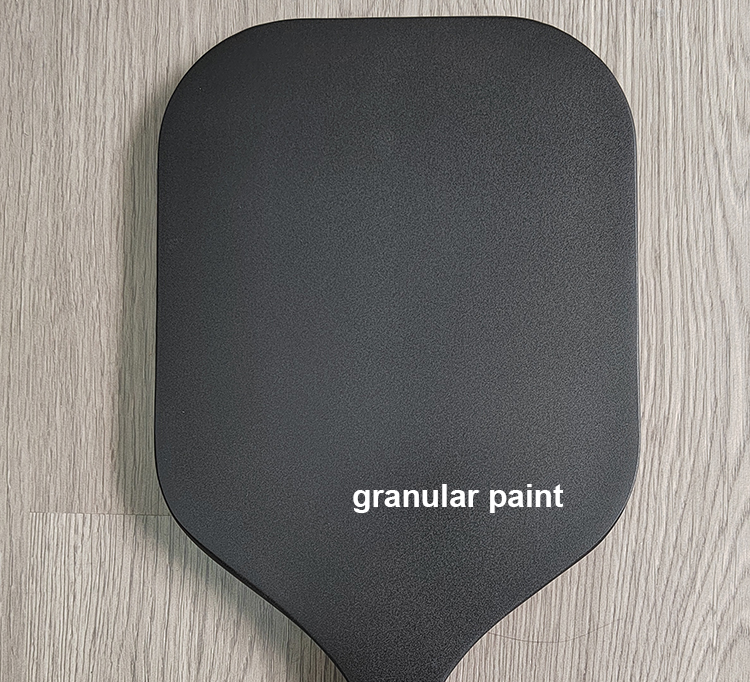This blog provides a detailed guide to the PP honeycomb core used in pickleball paddles, covering cell size, core thickness, and material properties. Readers will learn how these factors impact paddle performance and how to choose the right paddle for their playing style.
This blog provides an in-depth look at the core materials used in pickleball paddles, including Polypropylene (PP) Honeycomb, Aramid Honeycomb, Aluminum Honeycomb, and EVA Core. It also explores specialized cores like composite cores, PP foam-filled honeycomb, and SSTCore. Readers will learn about the advantages and disadvantages of each material, helping them make informed decisions about their paddle choices.
This blog provides a comprehensive guide to the various materials used in the production of pickleball paddles. It covers fiberglass, T300 carbon fiber, T700 carbon fiber, T800 carbon fiber, 3K carbon fiber, 18K carbon fiber, Kevlar fiber, hemp fiber, and titanium fiber. The article explains each material's strength, durability, approximate cost, and suitable users, offering readers valuable insights into how these materials impact paddle performance.
This blog discusses the persistent issue of grip discomfort in cold-pressed pickleball paddles and explores innovative solutions and market trends. We delve into user complaints, potential improvements, and the implications for manufacturers and players. This discussion aims to shed light on whether enhancing grip comfort can provide a competitive edge in the pickleball market.
Discover the gamechanging benefits of our new titanium fiber pickleball paddle. With enhanced performance, superior durability, and unmatched comfort, this paddle is set to revolutionize the market. Learn how it compares to T700 carbon fiber and why it's the perfect choice for players seeking the best.
This comprehensive guide delves into the technical specifics of fiberglass and T300 carbon fiber pickleball paddles. By examining their strengths, weaknesses, costs, and suitability for different players, we provide data-driven insights to help you make an informed choice. The analysis includes tensile strength, elasticity modulus, weight comparisons, and real-world applications to highlight the practical differences between these two popular materials.
Peel-Ply treatment is an advanced technique used in the manufacturing of pickleball paddles to enhance grip, control, and durability. By placing peel-ply fabric between layers of carbon fiber and compressing them in a vacuum bag, this method creates a textured surface that significantly improves paddle performance. This article explores the advantages and disadvantages of Peel-Ply treatment, compares it to granular paint treatment, and discusses the friction coefficient and roughness control of the treated surfaces.
Applying textured paint to pickleball paddles can significantly enhance the grip, control, and overall gameplay experience. This article discusses the reasons for applying textured paint, the benefits, and a step-by-step guide to the application process using the 5W2H method: Who, What, When, Where, Why, How, and How Much.
Product Knowledge

Xiaxitou No.471, Tongan District, Xiamen, Fujian 361100 – China
Quick links
- About us
- FAQs
- Product catalog
- How to cutdown cost
- Material introduction
- Production process
- Customized service
Find Us
Join us to develope pickleball and Win-Win together!










